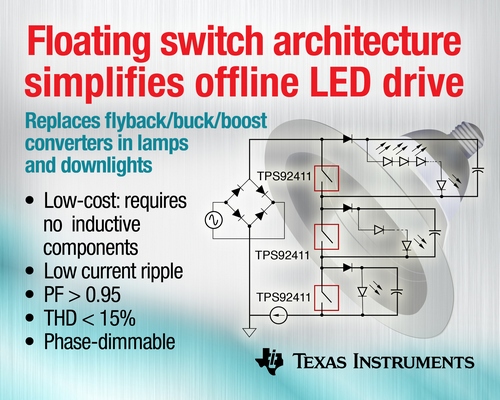Texas Instruments introduced the industry's first floating switch architecture that simplifies the offline linear drive of LEDs in lamps, downlights and fixtures. The AC switched matrix technique features TI's TPS92411 floating MOSFET switch and is an innovative approach to producing low-ripple LED drive current without magnetic components. The architecture provides excellent compatibility with legacy wall dimmers and delivers high power factor and low total harmonic distortion (THD). For more information, samples and evaluation modules, visit www.ti.com/tps92411-pr.

Texas Instruments (TI) new floating switch architecture. (LEDinside/ Texas Instruments)
Flyback, buck and boost converters are common switch-mode power supply (SMPS) topologies in LED lamps today. These circuits operate at high frequencies and require inductive components to turn mains AC current into the constant DC current necessary to drive LEDs. Selection of inductors and transformers for power transfer is complicated, often requiring expensive custom components. In addition, an electromagnetic interference (EMI) filter consisting of four to ten passive components is required to prevent the SMPS circuit from harming other electronic equipment. If phase dimming is required, multiple design iterations may be necessary to optimize dimmer compatibility and prevent LED flicker.
The floating switch architecture with TI's TPS92411 overcomes these challenges. It requires no inductive components for power transfer, eliminating cost and bulk and simplifying design.





